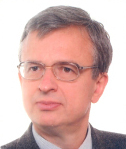Image


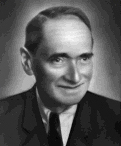 He was born in Warsaw, where he graduated from a classical gymnasium and began medical studies at the University of Warsaw. In the second year of studies, he transferred to the Faculty of Natural Sciences, which he graduated as a candidate of natural sciences. A two-year stay in Göttingen in the laboratory of Professor W. Voigt resulted in the first scientific work in 1905 on the magnetic twisting of the plane of polarization in the ultraviolet. In the years 1908-1920, being a teacher at the secondary school named after Mikołaj Rej conducted research on the radioactivity of the atmosphere and the influence of dissociation on optical phenomena. In the years 1909-1939 he was the head of the Department of Physics at the Higher School of Mechanical Engineering named after Wawelberga and Rotwand, where most of his scientific works were written. Before the outbreak of World War II, he dealt mainly with the Raman phenomenon and cosmic radiation. In 1945, he took over the Department of Experimental Physics at the newly established Maria Curie-Skłodowska University. He conducted research on thermodiffusion and the selective photoelectric effect using circularly and elliptically polarized light. He was also the head of the Physics Department of the Medical Academy and the rector of the Higher School of Engineering in Lublin. He became famous as the author of many physics textbooks for primary school as well as works intended for students and the wider public, whose beautiful language and clarity of presenting problems testify to his unique personality. A personality that combines a strict sense of duty and meticulousness in matters of science with a noble humanity.
He was born in Warsaw, where he graduated from a classical gymnasium and began medical studies at the University of Warsaw. In the second year of studies, he transferred to the Faculty of Natural Sciences, which he graduated as a candidate of natural sciences. A two-year stay in Göttingen in the laboratory of Professor W. Voigt resulted in the first scientific work in 1905 on the magnetic twisting of the plane of polarization in the ultraviolet. In the years 1908-1920, being a teacher at the secondary school named after Mikołaj Rej conducted research on the radioactivity of the atmosphere and the influence of dissociation on optical phenomena. In the years 1909-1939 he was the head of the Department of Physics at the Higher School of Mechanical Engineering named after Wawelberga and Rotwand, where most of his scientific works were written. Before the outbreak of World War II, he dealt mainly with the Raman phenomenon and cosmic radiation. In 1945, he took over the Department of Experimental Physics at the newly established Maria Curie-Skłodowska University. He conducted research on thermodiffusion and the selective photoelectric effect using circularly and elliptically polarized light. He was also the head of the Physics Department of the Medical Academy and the rector of the Higher School of Engineering in Lublin. He became famous as the author of many physics textbooks for primary school as well as works intended for students and the wider public, whose beautiful language and clarity of presenting problems testify to his unique personality. A personality that combines a strict sense of duty and meticulousness in matters of science with a noble humanity.
Postępy Fizyki, t.VII, z. 3, 1956, str. 123.
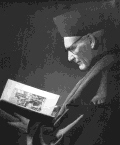 He was born in Łódź, where in 1928 he graduated from high school. He began his medical studies in Rostock and continued them in Berlin. However, he soon changed his field of study to mathematics, physics and philosophy, moving to the University of Leipzig. The economic and political situation forced him to return to Poland in 1933, where he continued his physical studies at the University of Warsaw, obtaining in 1939 a master's degree in philosophy in physics. After the war, in 1947, he started working at the Department of Experimental Physics of the Maria Curie-Skłodowska University under the supervision of Professor Stanisław Ziemecki. Brownian motions of radioactive bodies were the subject of his doctoral dissertation, which he defended in 1950. He was the dean of the Faculty of Mathematics, Physics and Chemistry of the Maria Curie-Skłodowska University four times, and from 1958 he was the head of the Department of General Physics. As an outstanding teacher and expert in the history of physics, he was greatly appreciated by young people. He wrote many works on famous scientists, e.g. Pascal, Galileo, Marian Smoluchowski, Władysław Natanson. He was the head of the Department of History of Exact Sciences of the Department of History of Science and Technology of the Polish Academy of Sciences, a member of the Lublin Scientific Society and a member of the Scientific Council of the Polish Academy of Sciences. He is remembered as a great humanist.
He was born in Łódź, where in 1928 he graduated from high school. He began his medical studies in Rostock and continued them in Berlin. However, he soon changed his field of study to mathematics, physics and philosophy, moving to the University of Leipzig. The economic and political situation forced him to return to Poland in 1933, where he continued his physical studies at the University of Warsaw, obtaining in 1939 a master's degree in philosophy in physics. After the war, in 1947, he started working at the Department of Experimental Physics of the Maria Curie-Skłodowska University under the supervision of Professor Stanisław Ziemecki. Brownian motions of radioactive bodies were the subject of his doctoral dissertation, which he defended in 1950. He was the dean of the Faculty of Mathematics, Physics and Chemistry of the Maria Curie-Skłodowska University four times, and from 1958 he was the head of the Department of General Physics. As an outstanding teacher and expert in the history of physics, he was greatly appreciated by young people. He wrote many works on famous scientists, e.g. Pascal, Galileo, Marian Smoluchowski, Władysław Natanson. He was the head of the Department of History of Exact Sciences of the Department of History of Science and Technology of the Polish Academy of Sciences, a member of the Lublin Scientific Society and a member of the Scientific Council of the Polish Academy of Sciences. He is remembered as a great humanist.
Annales Universitatis Mariae Curie-Skłodowska,
Lublin-Polonia, vol. XXIII, sec. AA, 1968, str. I.
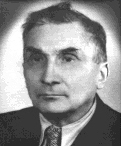 He was born in Yerevan. He graduated in physics from the University of Lomonosov in Moscow. Then he briefly worked at the Moscow Pedagogical Institute. In 1920, he started working at the AGH University of Science and Technology in Kraków, where he dealt with the physical properties of suspensions.
He was born in Yerevan. He graduated in physics from the University of Lomonosov in Moscow. Then he briefly worked at the Moscow Pedagogical Institute. In 1920, he started working at the AGH University of Science and Technology in Kraków, where he dealt with the physical properties of suspensions.
After obtaining a doctoral degree at the Jagiellonian University, he worked in industry in Pionki. In 1945, he started working as an assistant professor at the Department of Theoretical Physics at UMCS, which he then headed for 20 years until 1966. His scientific interests concerned mathematical physics, thermodynamics and mechanics. He was a great teacher and popularizer of physics, mathematics and astronomy. He was active in the Universal Knowledge Society, the Polish Physical Society, the Polish Mathematical Society, the Polish Society of Astronomy Enthusiasts and the Lublin Scientific Society. His deep and comprehensive knowledge, duty and conscientiousness visible in all his actions made him a model teacher.
Postępy Fizyki, t.33, z. 5-6, 1982, str. 385.
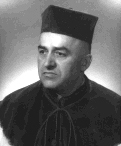 He was born in Klimowicze (now in Belarus). In 1935, he graduated from the Hetman Jan Zamoyski in Lublin and in 1936 he began studying physics at the University of Warsaw. Master's thesis was interrupted by World War II. After the occupation, he worked as a physics teacher at the Chemistry High School in Lublin, and in 1944 he was employed at the Department of Physics of the newly established Maria Curie-Skłodowska University. Based on the work entitled "Fluorescence of thallium-activated KCl crystals" received a master's degree in physics in 1946 from the University of Warsaw. ionization phenomena in a mass spectrometer. In the years 1956-1961 he worked at the Department of Elementary Particles of the Polish Academy of Sciences in Warsaw and the Institute of Nuclear Research in Świerk. Foreign internships in nuclear physics centers in Stockholm, Uppsala and Copenhagen deepened his knowledge in this field and prompted him to intensive work on the construction of nuclear spectroscopy equipment, beta and gamma spectrometers and equipment for measuring gamma-gamma and e-gamma angular correlations. In 1963, under his direction, the first electromagnetic isotope separator in Poland was built. In the following years, he led the work of a group of scientists from Lublin at the Joint Institute for Nuclear Research in Dubna, initiating a series of studies on the determination of spin values of excited states and multipoleity of gamma transitions in the nuclei of rare earth elements. Thanks to his efforts, in the 1970s, a unique implantator with 330 keV ion energy was brought to Lublin. The scientific achievements of Professor Włodzimierz Żuk include over 200 items. His great merit was the creation of appropriate working conditions and the education of highly-specialized staff of scientists not only in the field of isotope research. He was also active in teaching and organizing. He educated over 300 masters of physics and supervised 19 doctoral dissertations. In the years 1957-1970 he headed the Department of Experimental Physics at UMCS, and from 1970 the Department of Nuclear Physics. Being vice-rector of UMCS for science in the years 1962-1968, he led to the construction of two well-equipped buildings for the needs of physics in Lublin. For many years he was active as a member of e.g. Committee of Physics of the Polish Academy of Sciences, the Nuclear Physics Committee of the State Council for the Use of Nuclear Energy, the Lublin Scientific Society and the European Physical Society. He was awarded, among others, With the Officer's Cross of the Order of Polonia Restituta, the Golden Cross of Merit and the Medal of the Swedish Academy of Sciences, he was an outstanding representative of not only Lublin but also Polish science.
He was born in Klimowicze (now in Belarus). In 1935, he graduated from the Hetman Jan Zamoyski in Lublin and in 1936 he began studying physics at the University of Warsaw. Master's thesis was interrupted by World War II. After the occupation, he worked as a physics teacher at the Chemistry High School in Lublin, and in 1944 he was employed at the Department of Physics of the newly established Maria Curie-Skłodowska University. Based on the work entitled "Fluorescence of thallium-activated KCl crystals" received a master's degree in physics in 1946 from the University of Warsaw. ionization phenomena in a mass spectrometer. In the years 1956-1961 he worked at the Department of Elementary Particles of the Polish Academy of Sciences in Warsaw and the Institute of Nuclear Research in Świerk. Foreign internships in nuclear physics centers in Stockholm, Uppsala and Copenhagen deepened his knowledge in this field and prompted him to intensive work on the construction of nuclear spectroscopy equipment, beta and gamma spectrometers and equipment for measuring gamma-gamma and e-gamma angular correlations. In 1963, under his direction, the first electromagnetic isotope separator in Poland was built. In the following years, he led the work of a group of scientists from Lublin at the Joint Institute for Nuclear Research in Dubna, initiating a series of studies on the determination of spin values of excited states and multipoleity of gamma transitions in the nuclei of rare earth elements. Thanks to his efforts, in the 1970s, a unique implantator with 330 keV ion energy was brought to Lublin. The scientific achievements of Professor Włodzimierz Żuk include over 200 items. His great merit was the creation of appropriate working conditions and the education of highly-specialized staff of scientists not only in the field of isotope research. He was also active in teaching and organizing. He educated over 300 masters of physics and supervised 19 doctoral dissertations. In the years 1957-1970 he headed the Department of Experimental Physics at UMCS, and from 1970 the Department of Nuclear Physics. Being vice-rector of UMCS for science in the years 1962-1968, he led to the construction of two well-equipped buildings for the needs of physics in Lublin. For many years he was active as a member of e.g. Committee of Physics of the Polish Academy of Sciences, the Nuclear Physics Committee of the State Council for the Use of Nuclear Energy, the Lublin Scientific Society and the European Physical Society. He was awarded, among others, With the Officer's Cross of the Order of Polonia Restituta, the Golden Cross of Merit and the Medal of the Swedish Academy of Sciences, he was an outstanding representative of not only Lublin but also Polish science.
Postępy Fizyki, t. 33, z. 4, 1982, str. 273.
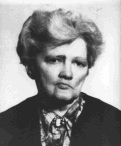 She was born in Lviv. In Kraków, she graduated from the State Girls' Gymnasium and then studied mathematics at the Jagiellonian University in 1935. Working as a teacher in Chorzów, and later in Siemianowice in Silesia, she studied physics at the Jagiellonian University, obtaining in 1938 a master's degree in physics. In 1945, she started working as an assistant in the Department of Physics at the Faculty of Natural Sciences of the Maria Curie-Skłodowska University. Scientific work on the issue of saturated steam condensation and ion condensation resulted in obtaining a doctorate in 1954, and then habilitation in 1962. From 1970, she headed the Department of General Physics, and from 1973, the Physics Teaching Team. In addition to scientific and organizational work, she devoted herself to popularization work with great dedication, as well as work with student youth as part of the Physicists' Scientific Circle. For 15 years she chaired the work of the District Committee of the Physics Olympiad. Thanks to her involvement, the Museum of Physics was developing, gathering automated sets for the demonstration of physical phenomena. She was the promoter of 7 doctorates and about 100 master's theses in the field of physics didactics. For her contribution to the development of science, the implementation of didactic and educational tasks, she received numerous awards, including Knight's Cross of the Order of Polonia Restituta, Medal of the Commission of National Education and the Merit Teacher of the People's Republic of Poland award. She has instilled lasting values in many generations of students and colleagues. The greatest of them - work - she loved in a special way.
She was born in Lviv. In Kraków, she graduated from the State Girls' Gymnasium and then studied mathematics at the Jagiellonian University in 1935. Working as a teacher in Chorzów, and later in Siemianowice in Silesia, she studied physics at the Jagiellonian University, obtaining in 1938 a master's degree in physics. In 1945, she started working as an assistant in the Department of Physics at the Faculty of Natural Sciences of the Maria Curie-Skłodowska University. Scientific work on the issue of saturated steam condensation and ion condensation resulted in obtaining a doctorate in 1954, and then habilitation in 1962. From 1970, she headed the Department of General Physics, and from 1973, the Physics Teaching Team. In addition to scientific and organizational work, she devoted herself to popularization work with great dedication, as well as work with student youth as part of the Physicists' Scientific Circle. For 15 years she chaired the work of the District Committee of the Physics Olympiad. Thanks to her involvement, the Museum of Physics was developing, gathering automated sets for the demonstration of physical phenomena. She was the promoter of 7 doctorates and about 100 master's theses in the field of physics didactics. For her contribution to the development of science, the implementation of didactic and educational tasks, she received numerous awards, including Knight's Cross of the Order of Polonia Restituta, Medal of the Commission of National Education and the Merit Teacher of the People's Republic of Poland award. She has instilled lasting values in many generations of students and colleagues. The greatest of them - work - she loved in a special way.
Fizyka w Szkole, z. 3 (200), 1989, str. 191.
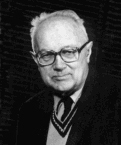 He was born in Vilnius. There he attended junior high school. King Zygmunt August. He began his studies in the academic year 1944/45 at the Faculty of Natural Sciences of the Maria Curie-Skłodowska University in the mathematical, physical and chemical section. After the second year of studies, he obtained an assistantship with prof. Ziemecki and under his supervision he prepared a master's thesis in solid state physics, which he defended in 1949. His doctoral dissertation in solid state physics was also supervised by prof. Stanisław Ziemecki. In 1958, he received his PhD degree in nuclear physics. he ran almost until his retirement. Thanks to his extraordinary diligence and discipline, he was able to take an additional job as an assistant professor at the Astronautics Laboratory of the Polish Academy of Sciences in 1956-1960 and at the Institute of Fundamental Technological Research of the Polish Academy of Sciences in 1960-1963. Professor Subotowicz's scientific interests focused on the physics of beta decay and nuclear spectroscopy, solid state physics and astronautics. He was also fascinated by the philosophical aspects of physics, the search for intelligent life in the Universe, the fate of civilizations and cultures in the era of the scientific and technological revolution. He excelled in organizational work. In the years 1966-1972 he was the Vice-Dean and then in 1972-1975 the Dean of the Faculty of Mathematics, Physics and Chemistry. He perfectly reconciled his additional duties with his scientific work. He was the author of several hundred scientific publications, including 6 books. Professor Subotowicz educated 16 doctors, 5 habilitated doctors and 3 titular professors. He was a well-known and respected popularizer of science, being a member of the Editorial Committees: Astronautyka, Postępy Astronautyki and Delta. He was a member of the Lublin Branch of the Polish Physical Society, the Lublin Scientific Society, took the initiative to establish the Polish Astronomical Society, co-founded the Polish Biophysical Society. In 1989 he was elected a regular member of the International Academy of Astronautics. He was also a member of the International Astronomical Union and the German Lilienthal Society. For his scientific and didactic activity, organizational work and popularization of science, he was awarded, among others, the Commander's, Officer's and Knight's Crosses of the Order of Polonia Restituta and the Medal of the Commission of National Education.
He was born in Vilnius. There he attended junior high school. King Zygmunt August. He began his studies in the academic year 1944/45 at the Faculty of Natural Sciences of the Maria Curie-Skłodowska University in the mathematical, physical and chemical section. After the second year of studies, he obtained an assistantship with prof. Ziemecki and under his supervision he prepared a master's thesis in solid state physics, which he defended in 1949. His doctoral dissertation in solid state physics was also supervised by prof. Stanisław Ziemecki. In 1958, he received his PhD degree in nuclear physics. he ran almost until his retirement. Thanks to his extraordinary diligence and discipline, he was able to take an additional job as an assistant professor at the Astronautics Laboratory of the Polish Academy of Sciences in 1956-1960 and at the Institute of Fundamental Technological Research of the Polish Academy of Sciences in 1960-1963. Professor Subotowicz's scientific interests focused on the physics of beta decay and nuclear spectroscopy, solid state physics and astronautics. He was also fascinated by the philosophical aspects of physics, the search for intelligent life in the Universe, the fate of civilizations and cultures in the era of the scientific and technological revolution. He excelled in organizational work. In the years 1966-1972 he was the Vice-Dean and then in 1972-1975 the Dean of the Faculty of Mathematics, Physics and Chemistry. He perfectly reconciled his additional duties with his scientific work. He was the author of several hundred scientific publications, including 6 books. Professor Subotowicz educated 16 doctors, 5 habilitated doctors and 3 titular professors. He was a well-known and respected popularizer of science, being a member of the Editorial Committees: Astronautyka, Postępy Astronautyki and Delta. He was a member of the Lublin Branch of the Polish Physical Society, the Lublin Scientific Society, took the initiative to establish the Polish Astronomical Society, co-founded the Polish Biophysical Society. In 1989 he was elected a regular member of the International Academy of Astronautics. He was also a member of the International Astronomical Union and the German Lilienthal Society. For his scientific and didactic activity, organizational work and popularization of science, he was awarded, among others, the Commander's, Officer's and Knight's Crosses of the Order of Polonia Restituta and the Medal of the Commission of National Education.
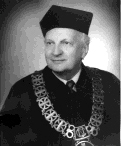 He was born in the village of Szopin near Zamość. He began his three-year physical studies in 1949 at the Faculty of Mathematics and Natural Sciences of UMCS, and then studied at the Jagiellonian University, obtaining his master's degree in 1954. After returning to Lublin, he started working at the Department of Theoretical Physics of the Faculty of Mathematics, Physics and Chemistry of UMCS. He defended his doctoral dissertation on the effective viscosity of suspensions of spherical particles in various flow conditions in 1964. While working as an assistant professor in the Department of Theoretical Physics, he lectured on the mechanics and dynamics of continuums, thermodynamics with statistical mechanics, electrodynamics with the theory of relativity, quantum electrodynamics and mathematical methods of physics. As an associate professor, from 1969, he organized a team for theoretical research in the field of solid state physics. In 1982, he took the position of the Head of the Department of General Physics and Physics Didactics. He brilliantly reconciled his scientific and didactic work with the duties of the deputy director of the Institute of Physics of the Maria Curie-Skłodowska University in the years 1971-1976, vice-dean and dean of the Faculty of Mathematics, Physics and Chemistry. in the years 1981-1984, 1984-1987 and 1990-1993. In addition, in the years 1974-1981, he participated in the scientific, research and teaching activities of the Military Aviation Academy in Dęblin. He also organized and for 10 years ran the Postgraduate Physics Study for teachers at the Institute of Physics of the Maria Curie-Skłodowska University. He had an extraordinary ability to clearly, demonstratively present physical issues. He used it both when lecturing and writing a number of school textbooks and student scripts. He was remembered by his colleagues, friends and students as a very understanding and kind man.
He was born in the village of Szopin near Zamość. He began his three-year physical studies in 1949 at the Faculty of Mathematics and Natural Sciences of UMCS, and then studied at the Jagiellonian University, obtaining his master's degree in 1954. After returning to Lublin, he started working at the Department of Theoretical Physics of the Faculty of Mathematics, Physics and Chemistry of UMCS. He defended his doctoral dissertation on the effective viscosity of suspensions of spherical particles in various flow conditions in 1964. While working as an assistant professor in the Department of Theoretical Physics, he lectured on the mechanics and dynamics of continuums, thermodynamics with statistical mechanics, electrodynamics with the theory of relativity, quantum electrodynamics and mathematical methods of physics. As an associate professor, from 1969, he organized a team for theoretical research in the field of solid state physics. In 1982, he took the position of the Head of the Department of General Physics and Physics Didactics. He brilliantly reconciled his scientific and didactic work with the duties of the deputy director of the Institute of Physics of the Maria Curie-Skłodowska University in the years 1971-1976, vice-dean and dean of the Faculty of Mathematics, Physics and Chemistry. in the years 1981-1984, 1984-1987 and 1990-1993. In addition, in the years 1974-1981, he participated in the scientific, research and teaching activities of the Military Aviation Academy in Dęblin. He also organized and for 10 years ran the Postgraduate Physics Study for teachers at the Institute of Physics of the Maria Curie-Skłodowska University. He had an extraordinary ability to clearly, demonstratively present physical issues. He used it both when lecturing and writing a number of school textbooks and student scripts. He was remembered by his colleagues, friends and students as a very understanding and kind man.
Fizyka w Szkole, z. 5 (227), 1994, str. 307.
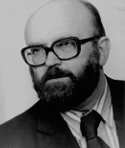 He was born on August 4, 1930 in Lublin. He obtained his master's degree in physics in 1955 at the Maria Curie-Skłodowska University. PhD thesis under the supervision of prof. He defended Włodzimierz Żuk in 1963. Then, in 1971, he obtained his habilitation, and received the title of professor in 1980. He is one of the main co-founders of the Institute of Physics of the Maria Curie-Skłodowska University. In the years 1970-1987, he was the deputy director for three terms, and then the director of the Institute for the next three terms. In 1976, he organized the Department of Applied Physics and launched the specialty of education "applied physics". In his scientific activity, he made a name for himself in the field of mass spectrometry, physics of ionization phenomena and speech therapy. He was particularly passionate about the problems of stuttering therapy (the "echo method", speech corrector, echo-telephone speech correction system). This trend of creativity, important for social reasons, enjoyed great interest in Poland and abroad (the award of the title of Pole of the Year 1964, numerous implementations of the echo method in speech therapy clinics). Professor Bogdan Adamczyk's publications include nearly three hundred items. His achievements in educating young scientific staff deserve special recognition. He supervised 180 master's theses and 10 doctorates, and supervised 4 habilitations. He personally participated in all the Physics Shows until his retirement in 2000. Despite his numerous professional duties, he devoted himself to social work, for many years he chaired the Polish Logopedic Society and published the yearly "Logopedia".
He was born on August 4, 1930 in Lublin. He obtained his master's degree in physics in 1955 at the Maria Curie-Skłodowska University. PhD thesis under the supervision of prof. He defended Włodzimierz Żuk in 1963. Then, in 1971, he obtained his habilitation, and received the title of professor in 1980. He is one of the main co-founders of the Institute of Physics of the Maria Curie-Skłodowska University. In the years 1970-1987, he was the deputy director for three terms, and then the director of the Institute for the next three terms. In 1976, he organized the Department of Applied Physics and launched the specialty of education "applied physics". In his scientific activity, he made a name for himself in the field of mass spectrometry, physics of ionization phenomena and speech therapy. He was particularly passionate about the problems of stuttering therapy (the "echo method", speech corrector, echo-telephone speech correction system). This trend of creativity, important for social reasons, enjoyed great interest in Poland and abroad (the award of the title of Pole of the Year 1964, numerous implementations of the echo method in speech therapy clinics). Professor Bogdan Adamczyk's publications include nearly three hundred items. His achievements in educating young scientific staff deserve special recognition. He supervised 180 master's theses and 10 doctorates, and supervised 4 habilitations. He personally participated in all the Physics Shows until his retirement in 2000. Despite his numerous professional duties, he devoted himself to social work, for many years he chaired the Polish Logopedic Society and published the yearly "Logopedia".
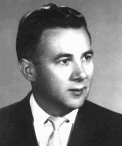 He was born on November 4, 1926 in Lublin. The German occupation interrupted his secondary education for five years, from which he graduated in 1947. He obtained his master's degree in mathematics in 1951 at the Maria Curie-Skłodowska University. While still a student, in 1948, he started working as a deputy assistant in the Department of Physics at the Maria Curie-Skłodowska University headed by Professor Stanisław Ziemecki. He took over the management of the Department in 1966 with one doctor, and left it when he retired in 1998 - with six titular professors, four habilitated doctors and ten doctors. They were all students of Professor Stanisław Szpikowski, and half of them started their scientific work under his direct supervision. From 1983 he headed the Department of Theoretical Physics as a full professor. He was the first director of the Institute of Physics at Maria Curie-Skłodowska University (1970-1978) and the dean of the Faculty of Mathematics, Physics and Chemistry. UMCS (1980-1981). He also lectured periodically at the Agricultural University in Lublin, the Catholic University of Lublin, the Medical Academy in Lublin and the Lublin University of Technology. In 1981, he was the chairman of the XXVII Congress of Physicists in Lublin. He was on longer scientific internships and was invited as a "visiting professor" to many research and university centers in England (Manchester, Brighton, Daresbury), Germany (Heidelberg, Munich, Darmstadt), USA (Ann Arbor) and Italy (Trento). He is the author (and co-author) of over 160 publications and a textbook (Elements of Quantum Mechanics). In his scientific work, he dealt mainly with symmetry properties of atomic nuclei and nucleon interactions. Since 2000 he has been a professor at the Institute of Plasma and Laser Microfusion in Warsaw. Decorated with the Commander's, Officer's and Knight's Crosses of the Order of Polonia Restituta and the Medal of the National Education Commission.
He was born on November 4, 1926 in Lublin. The German occupation interrupted his secondary education for five years, from which he graduated in 1947. He obtained his master's degree in mathematics in 1951 at the Maria Curie-Skłodowska University. While still a student, in 1948, he started working as a deputy assistant in the Department of Physics at the Maria Curie-Skłodowska University headed by Professor Stanisław Ziemecki. He took over the management of the Department in 1966 with one doctor, and left it when he retired in 1998 - with six titular professors, four habilitated doctors and ten doctors. They were all students of Professor Stanisław Szpikowski, and half of them started their scientific work under his direct supervision. From 1983 he headed the Department of Theoretical Physics as a full professor. He was the first director of the Institute of Physics at Maria Curie-Skłodowska University (1970-1978) and the dean of the Faculty of Mathematics, Physics and Chemistry. UMCS (1980-1981). He also lectured periodically at the Agricultural University in Lublin, the Catholic University of Lublin, the Medical Academy in Lublin and the Lublin University of Technology. In 1981, he was the chairman of the XXVII Congress of Physicists in Lublin. He was on longer scientific internships and was invited as a "visiting professor" to many research and university centers in England (Manchester, Brighton, Daresbury), Germany (Heidelberg, Munich, Darmstadt), USA (Ann Arbor) and Italy (Trento). He is the author (and co-author) of over 160 publications and a textbook (Elements of Quantum Mechanics). In his scientific work, he dealt mainly with symmetry properties of atomic nuclei and nucleon interactions. Since 2000 he has been a professor at the Institute of Plasma and Laser Microfusion in Warsaw. Decorated with the Commander's, Officer's and Knight's Crosses of the Order of Polonia Restituta and the Medal of the National Education Commission.
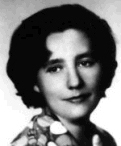 She was born on September 28, 1935 in Lublin. After graduating from high school Union of Lublin, she began studying physics at UMCS. Her master's thesis was on mass spectrometry. After graduation, she was a teacher in a high school; At the same time, she lectured at the then WSI in Lublin. In 1970, at the suggestion of Associate Professor Danuta Stachórska, she went to work at the Institute of Physics of the Maria Curie-Skłodowska University. She defended her doctorate in 1974. From the beginning of her employment, she gave lectures in physics as well as laboratory classes and seminars in physics didactics. She is the author of numerous works in the field of physics didactics and co-author of physics textbooks: three for grade 8, grade IV of high school, grade II of junior high school, and a textbook for teachers. She is the author and co-author of several scripts. While working at UMCS, for several terms, she managed the Postgraduate School of Physics, organized courses and seminars for physics teachers from Lublin and the region, as well as numerous physics demonstrations for secondary and primary school students. For her activities, she received the Knight's Cross, the Medal of the National Education Commission, three awards of the Minister of National Education and awards of the Main Board of the Polish Physical Society, and four Homo Didacticus diplomas from the students.
She was born on September 28, 1935 in Lublin. After graduating from high school Union of Lublin, she began studying physics at UMCS. Her master's thesis was on mass spectrometry. After graduation, she was a teacher in a high school; At the same time, she lectured at the then WSI in Lublin. In 1970, at the suggestion of Associate Professor Danuta Stachórska, she went to work at the Institute of Physics of the Maria Curie-Skłodowska University. She defended her doctorate in 1974. From the beginning of her employment, she gave lectures in physics as well as laboratory classes and seminars in physics didactics. She is the author of numerous works in the field of physics didactics and co-author of physics textbooks: three for grade 8, grade IV of high school, grade II of junior high school, and a textbook for teachers. She is the author and co-author of several scripts. While working at UMCS, for several terms, she managed the Postgraduate School of Physics, organized courses and seminars for physics teachers from Lublin and the region, as well as numerous physics demonstrations for secondary and primary school students. For her activities, she received the Knight's Cross, the Medal of the National Education Commission, three awards of the Minister of National Education and awards of the Main Board of the Polish Physical Society, and four Homo Didacticus diplomas from the students.
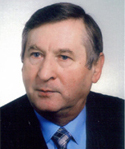
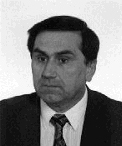 Stanisław Hałas was born on July 9, 1945 in Stryjów. He graduated from physics in 1968 at the Maria Curie-Skłodowska University. He received his doctoral degree in 1973 and his postdoctoral degree in 1982. Ten years later, in 1992, he was awarded the title of professor. The promoter of his master's and doctoral thesis was prof. Wlodzimierz Żuk. Scientific interests of prof. S. Hałas oscillated around mass spectrometry and its practical applications. He has been professionally associated with the Maria Curie-Skłodowska University since 1968 and for the next 50 years he conducted his scientific activity in Lublin. It is safe to say that he was one of the world's pioneers in mass spectrometric studies of the composition of stable isotopes in various types of samples. His scientific achievements resulted in over 250 scientific papers in the field of mass spectrometry, geochemistry, isotopes and geochronology (including 2 in the most prestigious scientific journal - Nature) and 25 patents. The isotopic standards he produces (e.g. SO-5, SO-6, S-1…) are used in laboratories all over the world and commercially distributed by the International Atomic Energy Agency in Vienna. He collaborated with many domestic and foreign research centers, which, due to their number, cannot be listed here. He is also a co-founder of the European Society for Isotope Research - a scientific society associating members from around 30 countries. He was also the President of the Polish Vacuum Society, the President of the Lublin Branch of the Polish Society of Amateur Astronomers, a member of the Main Board of the PPS, a member of the Lublin Scientific Society. He was the Editor of the Physics Section of Annales UMCS. He made a huge contribution to the development of the Laboratory and later the Department of Mass Spectrometry at the Institute of Physics of the Maria Curie-Skłodowska University. Professor Stanisław Hałas was awarded the Knight's Cross of the Order of Polonia Restituta, the Medal of the Commission of National Education and the Gold Cross of Merit for his achievements.
Stanisław Hałas was born on July 9, 1945 in Stryjów. He graduated from physics in 1968 at the Maria Curie-Skłodowska University. He received his doctoral degree in 1973 and his postdoctoral degree in 1982. Ten years later, in 1992, he was awarded the title of professor. The promoter of his master's and doctoral thesis was prof. Wlodzimierz Żuk. Scientific interests of prof. S. Hałas oscillated around mass spectrometry and its practical applications. He has been professionally associated with the Maria Curie-Skłodowska University since 1968 and for the next 50 years he conducted his scientific activity in Lublin. It is safe to say that he was one of the world's pioneers in mass spectrometric studies of the composition of stable isotopes in various types of samples. His scientific achievements resulted in over 250 scientific papers in the field of mass spectrometry, geochemistry, isotopes and geochronology (including 2 in the most prestigious scientific journal - Nature) and 25 patents. The isotopic standards he produces (e.g. SO-5, SO-6, S-1…) are used in laboratories all over the world and commercially distributed by the International Atomic Energy Agency in Vienna. He collaborated with many domestic and foreign research centers, which, due to their number, cannot be listed here. He is also a co-founder of the European Society for Isotope Research - a scientific society associating members from around 30 countries. He was also the President of the Polish Vacuum Society, the President of the Lublin Branch of the Polish Society of Amateur Astronomers, a member of the Main Board of the PPS, a member of the Lublin Scientific Society. He was the Editor of the Physics Section of Annales UMCS. He made a huge contribution to the development of the Laboratory and later the Department of Mass Spectrometry at the Institute of Physics of the Maria Curie-Skłodowska University. Professor Stanisław Hałas was awarded the Knight's Cross of the Order of Polonia Restituta, the Medal of the Commission of National Education and the Gold Cross of Merit for his achievements.
